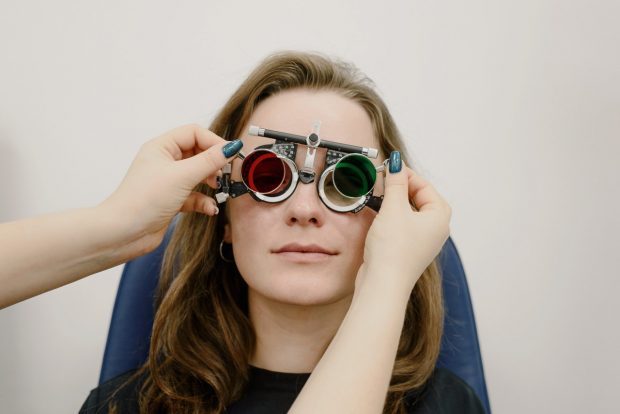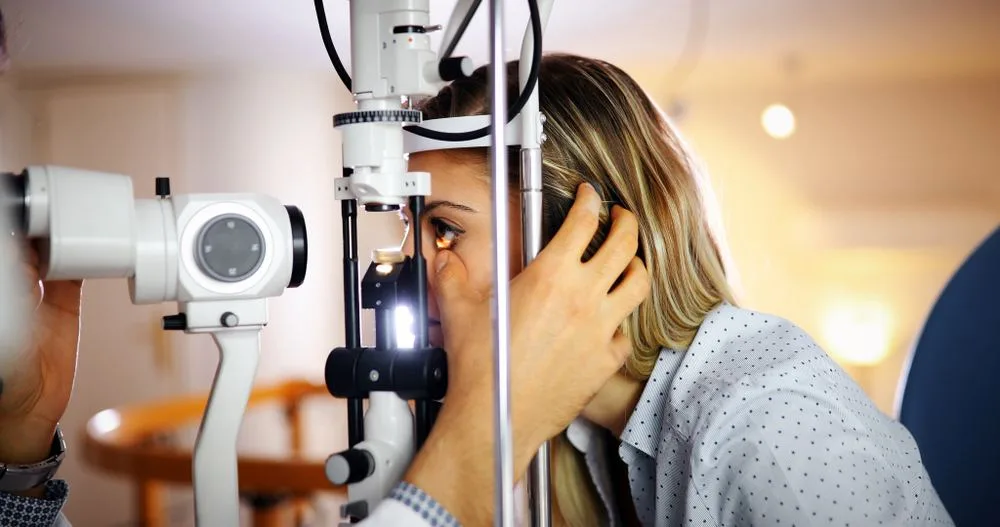The eyes can be the window into your body’s health. They indicate various health issues (such as high cholesterol and liver disease). Red light therapy is an emerging treatment that has shown promising results in the treatment of wrinkles, redness of the skin, acne, scars, and other signs of aging. However, this therapy can be particularly beneficial for your eyes. University College London found that applying this light can improve declining vision, through the treatment of macular degeneration.
Red Light Therapy and Improved Eye Health
Red light therapy makes use of low-level wavelengths of nearly visible infrared light. This improves the function and health of your individual cells. Light therapy works by strengthening the mitochondria. This is the part of each cell responsible for providing power and energy, and plays a vital role in healthy eye functioning.
Mitochondria and the Eyes
According to the lead author of this study, Prof. Glen Jeffery, the mitochondria is very important for the healthy functioning of the eye, with it being able to double up as a microscopic lens. Based on a 2022 study published in Science Advances, mitochondria help convert light into neural signals, which are interpreted by the brain.
Mitochondria: Extra Eye Lenses
Acting as tiny eye lenses, the mitochondria focuses light from the environment onto a thin tissue layer known as the retina. In the retina, photoreceptor cells absorb the light and translate it into nerve signals that are sent to the brain, and converted into the images we see.
Prof. Jeffery explains that “the great thing about the retina is that it has more mitochondria than any other organ because it uses so much energy.” Since you are able to place light directly onto retinal mitochondria, this makes red light therapy effective in aiding eye care, specifically, fighting against macular degeneration.
What Is Macular Degeneration?
Affecting nearly 200 million people worldwide, macular degeneration, also known as age-related macular degeneration (AMD), is a degenerative condition that affects the central part of the retina. This results in vision distortion (blurred or reduced vision), or a total loss of central vision.

Photo by Ksenia Chernaya from Pexels
It occurs when the macula, a part of your retina, is damaged. This decline in ocular cells leads to inflammation, cell degradation, and eventual visual decline. In its early stages, this condition may not have any symptoms, but in its advanced stages, your sight significantly deteriorates. This condition is split into two types, namely:
- Dry AMD: This is the most common form of the condition, with about 80% of those impacted by AMD having this form of it. This takes place when the light-sensitive cells in the macula begin breaking down, typically impacting one eye at a time. This can progress into the second type, Wet AMD.
- Wet AMD: Although this type is less common, it tends to result in more severe vision loss in patients compared to those affected by Dry AMD. Being the most common cause of severe loss of vision, wet AMD takes place when there is abnormal blood vessel growth beneath the retina. These vessels leak fluid and blood, which can create a large blind spot in the center of the visual field.
Common Symptoms
Symptoms of this may vary, but typical ones include:
- Visual distortions
- Reduced control vision in one or both eyes
- Needs brighter light when reading
- Difficulty adjusting to low light levels
- Increased blurriness of printed words
So, How Does Red Light Therapy Help Your Eyes?
Red light therapy works by increasing Adrenosine Triphosphate (ATP) production. This is an energy-carrying molecule in your body that harnesses chemical energy. It then releases it to fuel the work in the cell. ATP energy production is important for eye health and vision. It plays a crucial role in the fading of cells and function, leading to vision loss as you get older.
In a long-term study of patients with AMD, researchers from Bulgaria found that red light had significantly improved the patients’ vision by increasing ATP production in the eyes. After treatment, patients who participated in the study had shown dramatic improvement in visual acuity measured through their ability to read distant texts.
These findings concluded that red light therapy is highly effective as a treatment method for age-related eye conditions. It was also found effective in the prevention of cell death, and restoring vision after optic nerve injury.
Just How Safe Is It?
Research has shown that red light therapy is relatively safe if the correct precautionary measures are implemented. Unlike ultraviolet (UVA and UVB) light, red light doesn’t burn your eyes, even though you may feel subtle warmth during the treatment.
However, eyes are extremely photosensitive, so overexposure can cause damage. Most research on red light therapy involves 2-minute daily exposure, indicating that this is a safe amount of exposure.
Red Light Therapy: A Versatile Treatment
Red light therapy has grown in popularity for a wide range of uses, from cosmetic skin care to wound healing. With developments showing that it can be beneficial for eye health, specifically, the treatment of macular degeneration, it has established itself as a highly effective, multi-purpose healthcare solution. It is important that we prioritize our eye health, as it doesn’t just impact how we see the world, but also how we experience it.
References
- Dong, J., Zhu, Z., Xu, H. and He, M., 2023. Myopia control effect of repeated low-level red-light therapy in Chinese children: A randomized, double-blind, controlled clinical trial. Ophthalmology, 130(2), pp.198-204.
- Xu, W., Lee, M.M., Nie, J.J., Zhang, Z., Kwok, R.T., Lam, J.W., Xu, F.J., Wang, D. and Tang, B.Z., 2020. Three‐pronged attack by homologous far‐red/NIR AIEgens to achieve 1+ 1+ 1> 3 synergistic enhanced photodynamic therapy. Angewandte Chemie, 132(24), pp.9697-9703.



![women [longevity live]](https://longevitylive.com/wp-content/uploads/2020/01/photo-of-women-walking-down-the-street-1116984-100x100.jpg)










